A column with a UNIQUE constraint can contain a NULL value.
Which two statements are true about Oracle synonyms? (Choose two.)
B D
Explanation:
Reference: https://docs.oracle.com/cd/B19306_01/server.102/b14200/statements_7001.htm
You must create a table EMPLOYEES in which the values in the columns EMPLOYEES_ID and LOGIN_ID must be unique
and not null. Which two SQL statements would create the required table? (Choose two.)
B E
Which two statements are true regarding constraints? (Choose two.)
B C
A column with a UNIQUE constraint can contain a NULL value.
View the Exhibit and examine the structure of the ORDERS table. The columns ORDER_MODE and ORDER_TOTAL have
the default values direct and 0 respectively.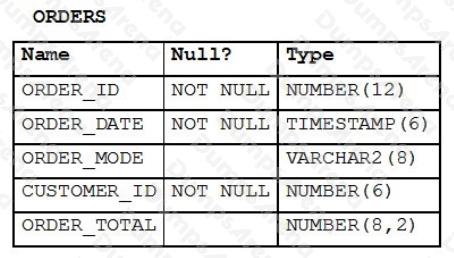
Which two INSERT statements are valid? (Choose two.)
C D
These statements will all generate an error because dates should be wrapped in single quotes.
insert into (select) è una sintassi scorretta
You want to write a query that prompts for two column names and the WHERE condition each time it is executed in a
session but only prompts for the table name the first time it is executed.
The variables used in your query are never undefined in your session.
Which query can be used?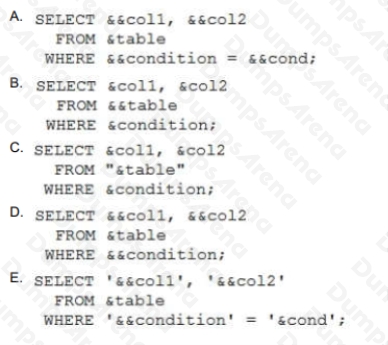
D
Unclear question. "You want to write a query...". I don't know if I'm looking for the query that is desired or the one that is causing the undesirable behavior.
полная хуйня,а не вопрос
View the Exhibit and examine the structure of the CUSTOMERS table.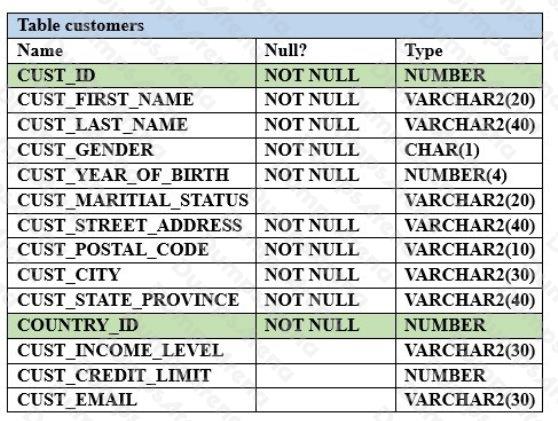
You want to generate a report showing the last names and credit limits of all customers whose last names start with A, B, or
C, and credit limit is below 10,000. Evaluate the following two queries:
SQL> SELECT cust_last_name, cust_credit_limit FROM customers
WHERE (UPPER(cust_last_name) LIKE A% OR
UPPER (cust_last_name) LIKE B% OR UPPER (cust_last_name) LIKE C%)
AND cust_credit_limit < 10000;
SQL>SELECT cust_last_name, cust_credit_limit FROM customers
WHERE UPPER (cust_last_name) BETWEEN A AND C AND cust_credit_limit < 10000;
Which statement is true regarding the execution of the above queries?
C
View the exhibit and examine the structures of the EMPLOYEES and DEPARTMENTS tables.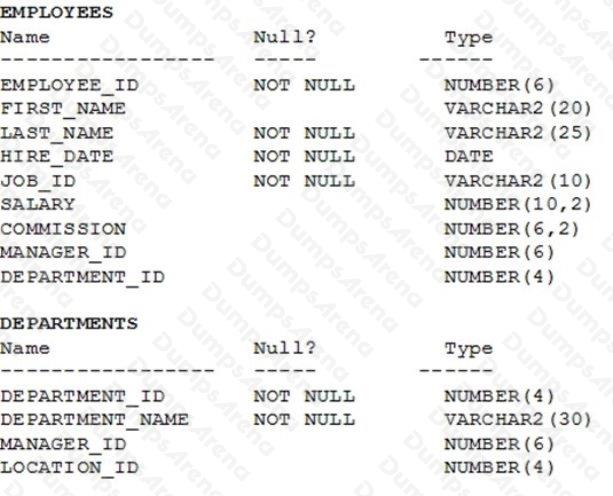
You want to update EMPLOYEES table as follows:
Update only those employees who work in Boston or Seattle (locations 2900 and 2700).
Set department_id for these employees to the department_id corresponding to London (location_id 2100).
Set the employees' salary in location_id 2100 to 1.1 times the average salary of their department.
Set the employees' commission in location_id 2100 to 1.5 times the average commission of their department.
You issue the following command: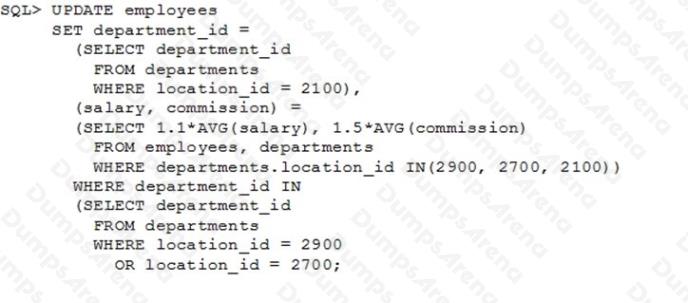
What is outcome?
D
Which statement is true regarding the UNION operator?
B
Which two statement are true regarding table joins available in the Oracle Database server? (Choose two.)
A D
View the Exhibit and examine the data in the PRODUCT_INFORMATION table.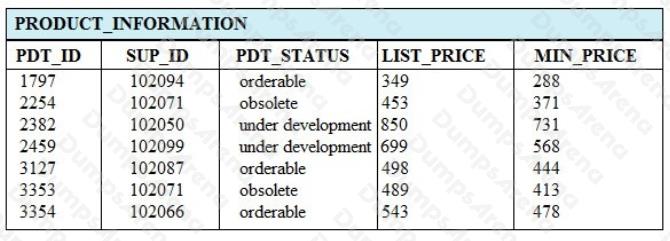
Which two tasks would require subqueries? (Choose two.)
A C
Which three statements are true about single-row functions? (Choose three.)
A B D
View the Exhibit and examine the structure of the CUSTOMERS table.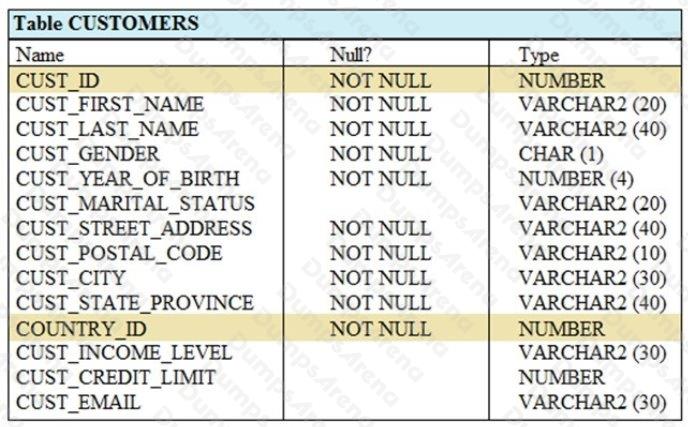
Using the CUSTOMERS table, you must generate a report that displays a credit limit increase of 15% for all customers.
Customers with no credit limit should have Not Available displayed.
Which SQL statement would produce the required result?
A
Examine the structure of the INVOICE table.
Which two SQL statements would execute successfully?
A C
View the Exhibit and examine the structure of ORDERS and ORDER_ITEMS tables.
ORDER_ID is the primary key in the ORDERS table. It is also the foreign key in the ORDER_ITEMS table wherein it is
created with the ON DELETE CASCADE option. Which DELETE statement would execute successfully?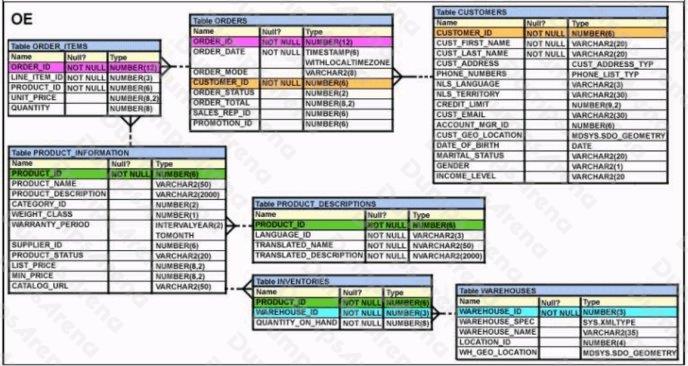
C
хуйня а не вопросы
View the Exhibit and examine the structure in the DEPARTMENTS tables. (Choose two.)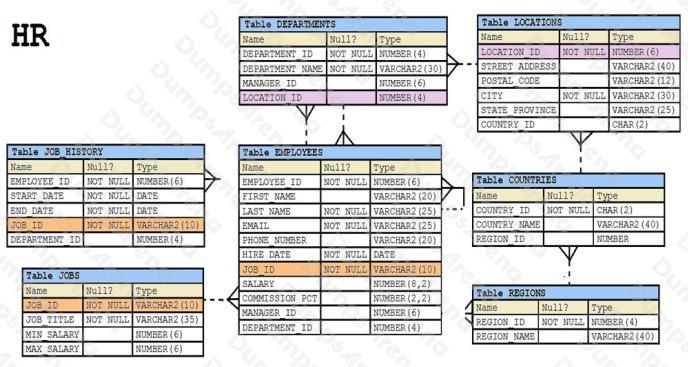
Examine this SQL statement:
SELECT department_id "DEPT_ID", department_name, 'b' FROM departments
WHERE departments_id=90
UNION
SELECT department_id, department_name DEPT_NAME, 'a' FROM departments
WHERE department_id=10
Which two ORDER BY clauses can be used to sort the output?
B D
A is correct because - CREATE SYNONYM statement creates a synonym, which is an alternative name for a table, view, sequence, operator, procedure, stored function, package, materialized view, Java class schema object, user-defined object type, or another synonym.
A, E looks valid. Each objects in the Oracle database has an object_id (reffer to dba_objects). A is obvious.
Each objects in the Oracle database has an object_id (reffer to dba_objects). A is obvious.
D is incorrect because The schema object cannot be contained in a package.
https://docs.oracle.com/cd/B19306_01/server.102/b14200/statements_7001.htm
A and e is true
no doubt about AE